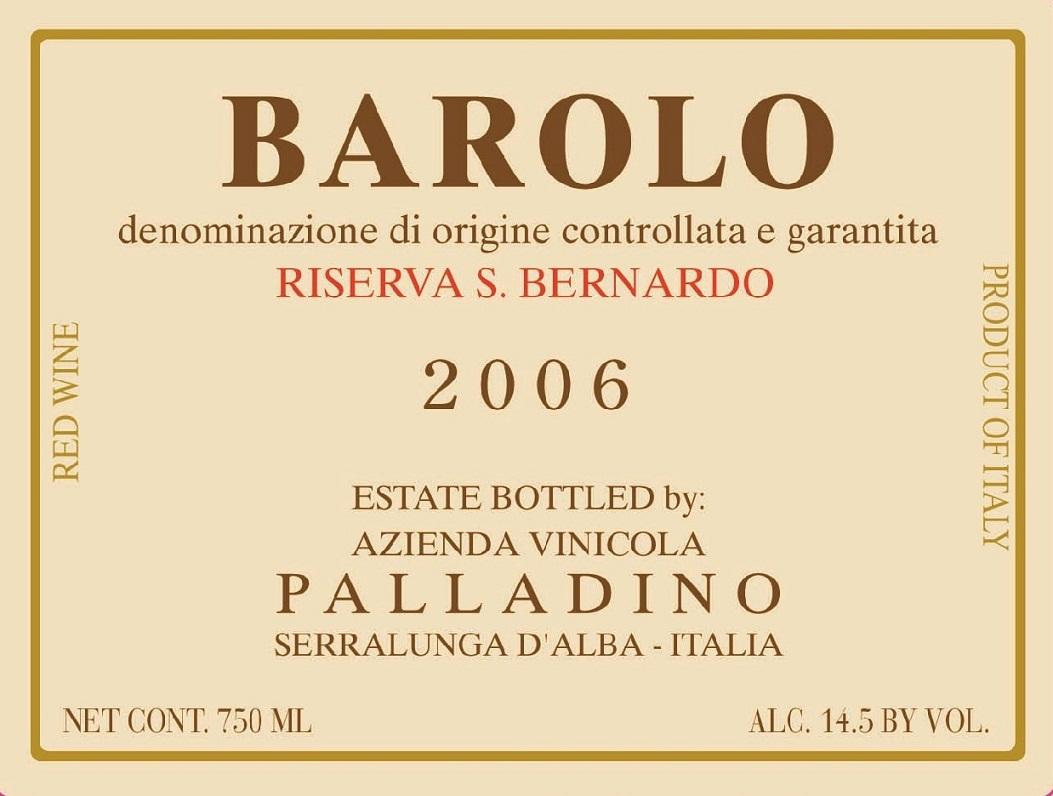2006 Barolo Nebbiolo
Palladino Riserva S. Bernardo is a stunning expression of Nebbiolo hailing from the prestigious Barolo region. This red wine captivates the senses with its alluring aromas of dark cherry, violet, and earthy truffles, showcasing the varietal's hallmark complexity. On the palate, it reveals a medium-bodied profile supported by bright acidity that enlivens the flavor experience, enhancing its fruit-forward character with layers of dried herbs and spice. Tannins are firm yet elegantly integrated, providing structure and depth to this remarkable wine. As a dry offering, it perfectly complements rich dishes, making it a delightful choice for any occasion. The 2006 vintage reflects the finesse and potential for aging that Barolo is renowned for, promising continued evolution in the bottle.
Palladino Riserva S. Bernardo is a stunning expression of Nebbiolo hailing from the prestigious Barolo region. This red wine captivates the senses with its alluring aromas of dark cherry, violet, and earthy truffles, showcasing the varietal's hallmark complexity. On the palate, it reveals a medium-bodied profile supported by bright acidity that enlivens the flavor experience, enhancing its fruit-forward character with layers of dried herbs and spice. Tannins are firm yet elegantly integrated, providing structure and depth to this remarkable wine. As a dry offering, it perfectly complements rich dishes, making it a delightful choice for any occasion. The 2006 vintage reflects the finesse and potential for aging that Barolo is renowned for, promising continued evolution in the bottle.




